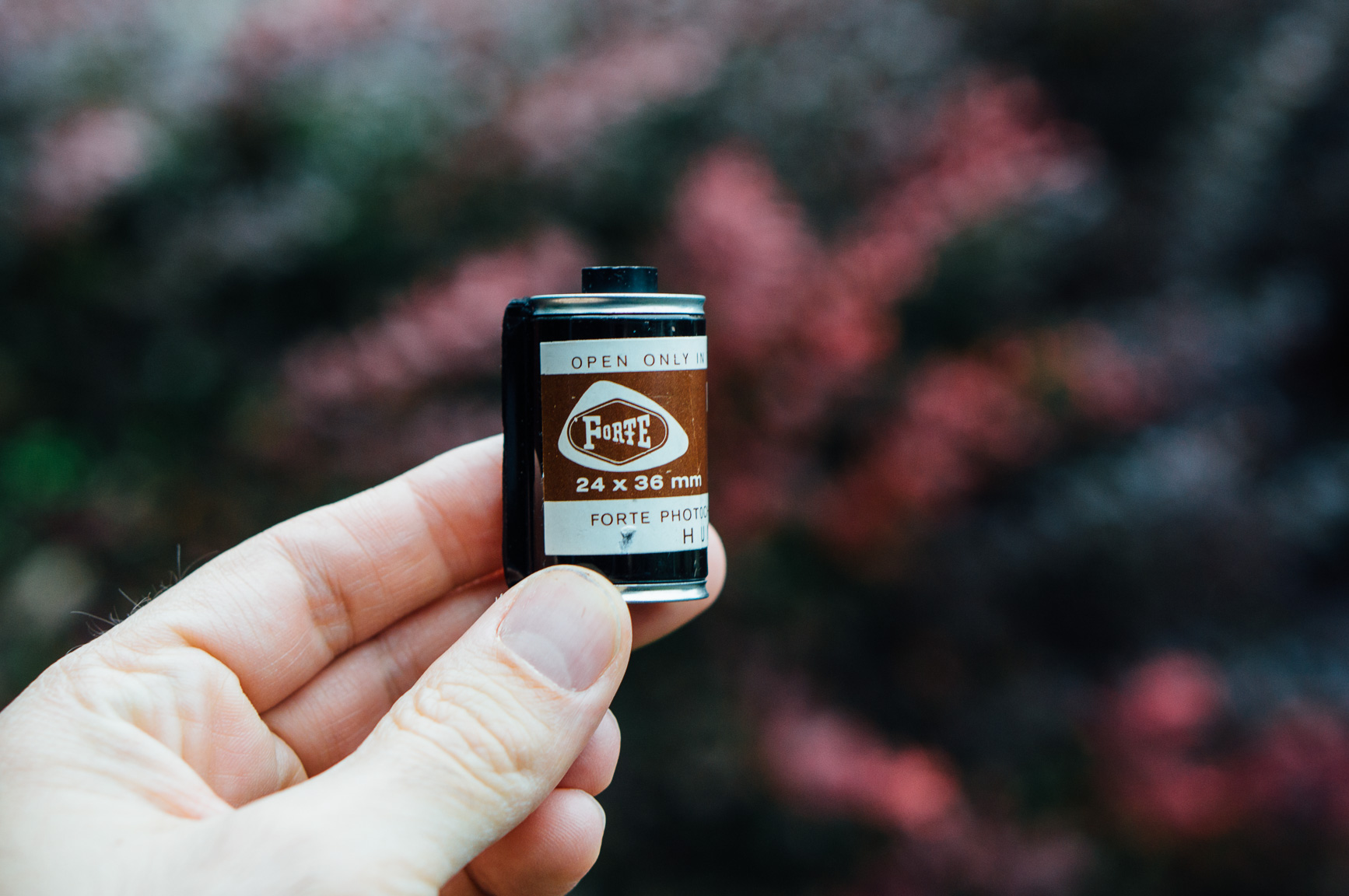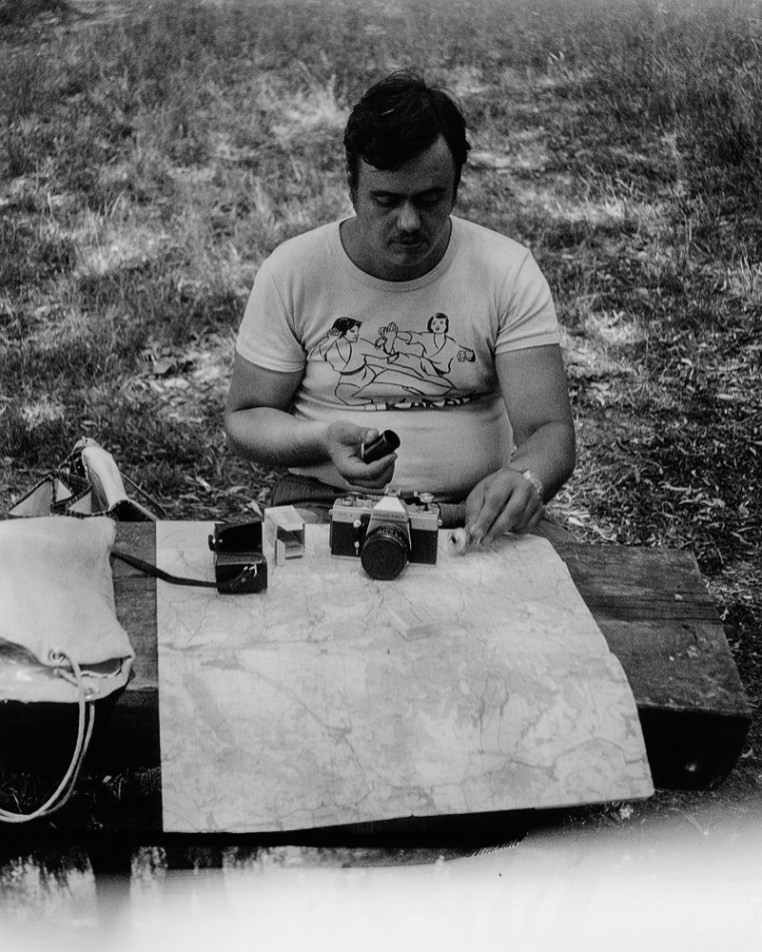
The members of the Mometta camera family are really quite special to me. There are not so many cameras were made in Hungary at the first place, but since these are 35mm rangefinder cameras with a quite unique design it was only a matter of time until one appeared on the blog. I could get my hands on the Mometta II which is possibly the most widely available model, but it features all the main characteristics of the entire lineup. In addition to the great camera finding, there was a roll of film in the camera possible older than four decades. If you like to know what was on it, keep reading.
Hungarian Leica
The first camera in the line was called Momikon (1954-1956) which name follows the same pattern of the Zeiss Ikon as the company behind the camera was called Magyar Optikai Művek (Hungarian Optical Works) MOM for short. Later the name has been changed to Mometta in 1955.
There were several variants produced in a relatively small amount of time, but the differences were not fundamental. Possibly the biggest change was in the last generation with the Mometta III whereby an interchangeable M42 mm lens mount was introduced. Production was ceased in 1962.

The goal with the design of the Momikon was to create a compact 35mm camera which can approach the ruggedness as well as the image quality represented by Leica on a much lower price point. It was targeted that the camera was somewhat affordable by an ordinary factory worker. The price of a Mometta in 1955 was 1490 Hungarian Forints and an extra 190 HUF for the ever-ready case. In contrast, the average monthly gross income at the time was around 1080 HUF. Of course, the lower price point did not come without compromises such as the fixed lens, no flash sync etc.
Body design



The camera has an adorable, in my opinion, borderline funny look. It is a little fat due to the unusual alignment of the film transfer. The film has to bend in an angle which in theory provides better film flatness in combination with the strong film pressing plate.
The image size is also quite irregular. The frame is 24x32mm as opposed to the normal 24x36mm. I could not find any information about the reasons for this design choice. I assume it has to do something with film efficiency. The 4mm per frame does not seem a lot, but it could mean that 40 frames can be made with a roll for 36 regular shoots.
It can be a problem for shooting positive film as dia frames will be impossible to find for this size.

The viewfinder is combined with the rangefinder and it is surprisingly big and bright considering the age and class of this camera. The rangefinder is less complex compared to the ones used in Leicas, but it is a very durable construction. Adjustments are supposed to be relatively simple to carry over and they are rarely required.

The ever-ready case is simply beautiful in my opinion. It is small, stylish and protects the camera very well. It even has a little pocket with a small white plastic plate in it for quick erasable notes. My only problem with it that the front part cannot be detached and so it cannot be used as a half case even though the body does not feature hooks for a neck strap. (The Mometta III has rings on the side of the camera for the strap.)

The lens

The lens is a 50mm f/3.5 Tessar type construction with an anti-reflective coating called Ymmar. The lens was calculated by Imre Újvári and it has a decent reputation. From the photos I have seen taken with it, the lens is very interesting indeed. Stopped down has enough sharpness for most scenarios while wide open in some cases it has a swirly bokeh which is beloved by many. On most versions except the very early ones, the lens barrel is quite deep and acts as a lens shade.
The lens is built into every model except the Mometta III. In this mark III version, an M42 thread mount was introduced, though the only lens I could find reference of for this camera was the Ymmar 50mm.
The film inside
I could not tell how many shots were left in the camera or if there were a film in it at all, I decided to shoot some random frames with it and then try to rewind.
It turned out that there was a roll of Fortepan 27 (17 Din/ ISO 40) black and white negative film in it. I am not sure about the age of the film, but from the design and based on the age of the camera I believe it had been loaded between the early 60’s to 70’s. In any case, this film could be at least 40 years old and no one has ever seen these photos until now.

The canister was so handsome that I tried to avoid damaging it for all costs. So, I tried to retrieve the film with a film retriever. Ultimately I have managed to get the film out without destroying the canister, but I think some light might have got into it.
As I found out, only a few shots have been taken on this role and even those got some light leak marks. But the sharpness and the crazy bokeh of the lens can be seen already from this limited sample. Also, it impresses me how well this film survived. It was exposed and kept undeveloped over decades in probably far from ideal conditions, yet they turned out relatively fine.

In addition to all that new shoots like this were also possible with this film.
Forte, by the way, was a Hungarian photochemical company manufacturing papers and film from 1922 to 2004, but unlike Film Ferrania in Italy, they have not been revived by crowdfunding and the factory looks like a post-apocalyptic site nowadays (click if you are interested).
Final thoughts
This Mometta II was bought by my father on a flea market and for now, he keeps it for himself. Therefore I only had a very short time to play with it. It had a very slow shutter, but nothing which could not be fixed with some maintenance work, so I undoubtedly got very interested. I will definitely find a way to spend more time with this little gem and take more photos with it.
The Mometta II is not particularly expensive, but it has a higher asking price then FSU cameras due to it’s relative rarity compare to them. The shutter is not synchronized so flash photography could be an issue as well as finding dia frames because of the unusual frame size. Supply of spare parts could also be a hard, therefore repairing and maintaining them might be problematic.
But for someone like me who likes to have a small easy to use good looking (not to mention special) camera in the bag for available light photography, it is certainly an interesting option.
References
Hungarian
English
- Hungarian cameras
- Collectors guide for Mometta
- Camera-wiki Mometta
- Camerapedia Momikon
- Collectors guide for MOM cameras
- Forte on camera-wiki
- Youtube intorduction of Momikon and Mometta cameras









[…] Mometta II […]
LikeLike